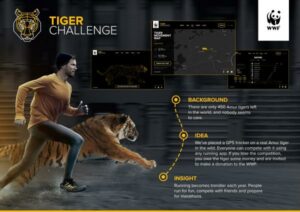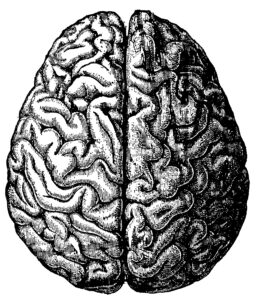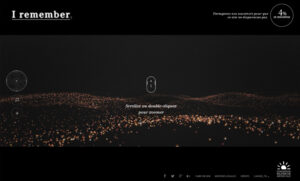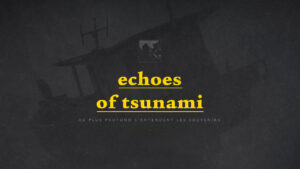Today, talking about user-centered design implies a desire to put yourself in someone else's shoes. The goal is to understand and apprehend both the initial desires and the future needs of the user.
To be able to respond to this ideology, you have to know how to show empathy.
So what is empathy?
Empathy is our ability to put oneself in another's place, to project themselves into the history and context of a person in order to understand all aspects.
This faculty is innate, and comes to us from our mirror neurons. Indeed in 1996, the team of neurologist Giacomo Rizzolattie from the University of Parma discovered a category of neurons reacting in the same way when we take action that whenanother individual performs this action in our place or that he imagine producing it.
This ability to recognize and perceive actions works the same way for emotions , this is the case when a person expresses disgust: Our neurons activate in the same way as if we were expressing it ourselves or imagining it.
it is mirror neurons then allow to project oneself into the other. More than “putting ourselves in the place of”, they allow us to adjust our behavior. they demonstrate a connexion " and an innate understanding of the other, which is why during his TED talk Dr Ramachandran (neurobiology expert in this field) call them "Gandhi's neurons".
Alright, what about the design?
Geoffrey Dorne , designer and blogger works a lot on this notion of empathy in design, he considers that: “Empathy, both in the social approach of the user and in the response that is delivered is an integral part of interaction design. But that is not necessarily obvious.
Indeed, the context does not always allow us to do so, because if we know and assess the needs and desires of users, we must also take into account the needs and desires of the client that we represent. However, the latter meets strategic, performance, financial and management criteria, which may be total contradiction with its target. Gael Hietin (atelierGH) talks about knowing how to develop a “empathetic schizophrenia” through which we could combine these two approaches.
 Joel de Rosnay (researcher at MIT, director of Research Applications at the Institut Pasteur.) explains to us in his Ted talk the practice of emphatic flow. This is rrethink the relationship that we have with others both in management and in project management. He considers that the structure of our current exchanges develops via balance of power, the idea being to be the most competitive, the best. But this is not a perfect system because the only way to get out of this type of relationship is to escalate, to be always stronger, a rise in power that aims to crush the other.
Joel de Rosnay (researcher at MIT, director of Research Applications at the Institut Pasteur.) explains to us in his Ted talk the practice of emphatic flow. This is rrethink the relationship that we have with others both in management and in project management. He considers that the structure of our current exchanges develops via balance of power, the idea being to be the most competitive, the best. But this is not a perfect system because the only way to get out of this type of relationship is to escalate, to be always stronger, a rise in power that aims to crush the other.
Yet a more modular, more agile exchange can lead to the same result, all while respecting a balance, a harmony in our relationship to each other. As a surfer, Joël de Rosnay draws a parallel that I found interesting: When we surf a wave we cannot establish a direct confrontation with it, our objective is to surf with it. To do this we must take into account its environment, the strength of the wave, its curvature our position in relation to it… It is by having a multidimensional information of events that we can then adapt our behavior, and therefore evolve with the wave. It's about working on the basis of a whole, to be in "empathy" with one's relationship to others and to exchanges.
Finally, I would like to present to you some projects that I found very rich in empathy, I chose these experiences in order to have a very literal example of the term empathy and to illustrate my words.
i remember, Created by the Werkstatt agency, the experiment aims to make us understand the disease ofAlzheimer. The user is invited to feed the site via memories, if he does not do so the site falls into oblivion.
Echoes of tshunami , An experience of Action Against Hunger. We are made to relive the tragic events of December 26, 2004 when the tsunami hit Asia. We are asked to close our eyes to hear the cries of disaster.

tiger challenge, At the initiative of WWF, it involves putting a runner in competition with a Siberian tiger. In case of failure the runner must make a donation. Here is the presentation video
In order to conclude, I think it is necessary to know how to act with empathy on all the scales of the different projects and those in all trades, both in micro-interaction and in more global concepts.
Claire Delsemme, UX Activist @UXRepublic
UX/UI ECO-DESIGN # Paris
SMILE Paris
163 quay of Doctor Dervaux 92600 Asnières-sur-Seine
DESIGN THINKING: CREATING INNOVATION # Belgium
UX-REPUBLIC Belgium
12 avenue de Broqueville - 1150 Woluwe-Saint-Pierre
MANAGING AND MEASURING UX # Paris
SMILE Paris
163 quay of Doctor Dervaux 92600 Asnières-sur-Seine
DESIGN SPRINT: INITIATION & FACILITATION # Paris
SMILE Paris
163 quay of Doctor Dervaux 92600 Asnières-sur-Seine
UX-DESIGN: THE FUNDAMENTALS # Belgium
UX-REPUBLIC Belgium
12 avenue de Broqueville - 1150 Woluwe-Saint-Pierre
GOOGLE ANALYTICS 4 #Paris
SMILE Paris
163 quay of Doctor Dervaux 92600 Asnières-sur-Seine
ACCESSIBLE UX/UI DESIGN # Belgium
UX-REPUBLIC Belgium
12 avenue de Broqueville - 1150 Woluwe-Saint-Pierre
EXPERIENCE MAPPING # Paris
SMILE Paris
163 quay of Doctor Dervaux 92600 Asnières-sur-Seine
















